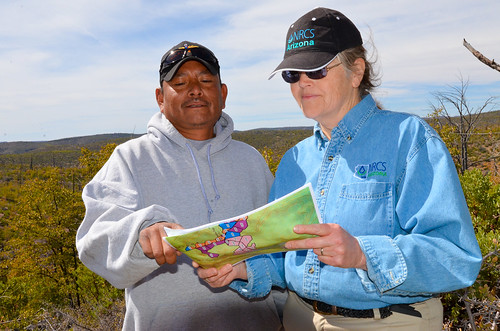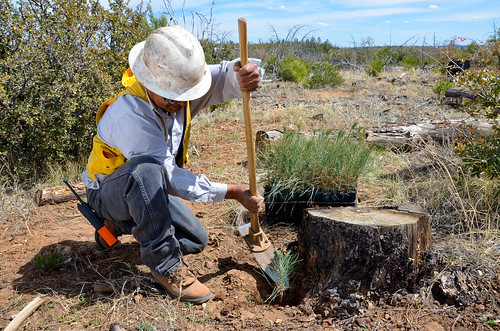
From the top of Limestone Ridge, 6,000 feet up, the scars of a massive wildfire on Arizona’s White Mountain Apache Reservation in east central Arizona are still visible. As far as the eye can see are bare mountain ranges where century-old ponderosa pines once stood.
A decade ago, the Rodeo-Chediski fire burned more than 270,000 acres and an estimated 80 million trees, leaving behind few pine trees to help seed the beginnings of a new forest.
“There is no seed source out here for the tree to establish again, so one of the main things that we are doing is helping Mother Nature along by artificially getting trees out here,” says Daniel Keesay, field operations manager for the White Mountain Apache Tribe forestry department.
The department and the USDA’s Natural Resources Conservation Service (NRCS) are working together to restore native ponderosa pines to a portion of the reservation’s scarred landscape. Experts estimate it could take planting 750,000 trees over 20 years to completely reforest the burned areas to historic levels. Tackling a reforestation project of this scope is expensive, time consuming and labor intensive.
To start the restoration process, the tribe has received financial assistance through the USDA’s national StrikeForce Initiative for Rural Growth and Opportunity to plant 168 acres of ponderosa pine seedlings on Limestone Ridge.
The national initiative addresses high-priority funding and technical assistance needs in rural communities in 16 states, including Arizona, with a special emphasis on historically underserved communities and producers in counties with persistent poverty.
The White Mountain Apache Tribe project will not only help re-establish some of the tribe’s commercial timber sources and ensure pine forest for generations to come, but also provide needed habitat for wildlife.
“These taxpayer dollars are being very well spent,” says Jan Pertuzzi, the NRCS district conservationist who has been working closely with the tribe on the restoration. “It’s money being put on the land and the people are benefitting from it.”

